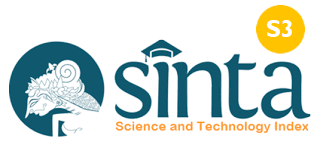Pengembangan Modul Berbasis Blended Learning Pendidikan Agama Buddha Materi Kelas VII Semester Ganjil di SMP Kabupaten Blitar
DOI:
https://doi.org/10.37329/cetta.v6i2.2450Keywords:
Module, Blended Learning, Buddhist EducationAbstract
Students who have grown accustomed to online instruction may experience cognitive dissonance while transitioning back to traditional classroom settings due to Covid-19's oversight. The creation of a blended learning module that incorporates online and in-person instruction is one approach to resolving the issue of how to carry out the learning process. This research set out to answer two questions: (1) how one might go about creating a blended learning module, and (2) whether or not such a module might be used effectively to teach Buddhist religious education content to seventh-semester middle school. Cennamo and Kalk's Spiral model is used for this study. In the spiral model, you first define the problem, then create a solution, then show how it works, and last deliver the solution. The average proportion, based on questionnaire data from large-scale experiments, was 92.24%. This blended learning module of Buddhist religious education has been found to be quite viable in order to be used for seventh grade students in junior high schools in Blitar Regency, as per the previously established requirements. Blended learning-based module solutions are suitable for usage as demonstrated by the results of completed questionnaires from content experts and media experts. The average percentage acquired in the massive study, as calculated by the table data from the questionnaires, was 92.24%. The integrated learning module for Buddhist religious education has been found to be quite viable in order to be used and applied to pupils in Blitar Regency's seventh grade of junior high school. After that, SPSS factor analysis indicated that the KMO and Bartlett's Test values were both more than 0.5, indicating that the product was viable. As a result, the study determines that the module can be used.
References
Alfiatunnisa, E., Khairunnisa, H. Z., Hayati, S., & Maulida, V. L. (2022). Uji Validitas Dan Reliabilitas Terhadap Kemandirian Siswa Sekolah Dasar Kelas 1. Jurnal Hurriah: Jurnal Evaluasi Pendidikan Dan Penelitian, 3(2), 29–36.
Bahtiar. (2021). The Effectiveness Of Blended Learning Model to Promote Physics Students Critical Thinking Skill. JPI (Jurnal Pendidikan Indonesia), 10.
Bais, Petrus, I. (2020). Model Blended Learning Pada Pembelajaran Bahasa Indonesia Program Pendidikan Kesetaraan Paket C (1st ed.). Yogyakarta: Kementerian Pendidikan Dan Kebudayaan Balai Pengembangan PAUD Dan Dikmas D.I Yogyakarta.
Darma, W. (2019). Inovasi Diskruptif (Discruptive Innovation) dalam pendidikan.
Eka ariyanti, Hariyanto, W. D. (2022). Pemahaman Peserta Didik saat Pembelajaran Daring Selama Pandemi Covid-19. SAP (Susunan Artikel Pendidikan), 132–140.
Fauzi, A. S. (2018). Pengembangan Multimedia Interaktif Untuk Mata Pelajaran Ips Pokok Bahasan “Perjuangan Melawan Penjajah” Development of Interactive Multimedia “Fighting Against Colonizer” for Social Studies. 1(2), 11.
Hasanah, N., & Suyadi. (2020). Jurnal Riset Pendidikan Dasar. Jurnal Riset Pendidikan Dasar, 03(2), 207–213.
Hesti Sadtyadi, B. K. (2014). Pengembangan Instrumen Penilaian Kinerja Guru Sekolah Dasar Berbasis Tugas Pokok Dan Fungsi. Jurnal Penelitian Dan Evaluasi Pendidikan, (2), 173–191.
Ika, D., Sihaloho, R., & Dantes, N. (2023). Pengembangan Instrumen Skala Kecerdasan Emosional Pada Masa Remaja Siswa SMA dan SMK. 9(1), 126–131.
Irwan, I., Tiara, M., & Angraini, R. (2019). Desain Model Pembelajaran Blended Learning Pada Perkuliahan Hubungan Internasional. Refleksi Edukatika : Jurnal Ilmiah Kependidikan, 10(1), 48–57.
Islam, U., & Sunan, N. (2021). Pengembangan Bahan Ajar Blended Learning Berbasis E-modul pada Pembelajaran Qur’an.
Kadek cahya, D. (2019). Blended Learning: Konsep dan Implementasi Pada Pendidikan Tinggi Vokasi (1st ed.; Mandra, ed.). Denpasar-Bali: Swasta Nulus.
Katherine Cennamo, D. K. (2019). Real World Instructional Design (An Iterative Approach to Designing Learning Experiences) (2nd ed.). New York: Routledge.
Khikmatul dan Riza. (2022). Pengembangan E-Modul Dengan Strategi 5m Merdeka Belajar Penunjang Blended Learning Mata Pelajaran Ekonomi. Oikos: Jurnal Ekonomi dan Pendidikan Ekonomi, 6(2), 145-158.
Panambaian, T. (2020). Penerapan Program Pengajaran dengan Model Blended Learning pada Sekolah Dasar di Kota Rantau. Journal Analytica Islamica, 22(1), 52–68.
Sari, F. N., Hatmono, P. D., & Singamurti, M. M. (2020). Pengembangan Modul Berbasis Problem Based Learning (PBL) Pada Materi Hukum Tertib Kosmis (Niyama) Untuk Siswa Tingkat SMA. Jurnal Pendidikan, Sains Sosial, Dan Agama, 6(1), 52–63.
Zamzami, Z., & K, C. M. (2018). Blended Learning Method Within Indonesian Higher Education Institutions. Jurnal Pendidikan Humaniora, 6(2), 69–77.
Pangestika, N., Faizin, M., & Mursalim. (2021). Faktor Penghambat Siswa Sekolah Dasar dalam Meningkatkan Prestasi Belajar di Masa Pendemi Covid-19. Jurnal Papeda, 13(1), 58–66.
Sadtyadi, H. (2020). Keterlaksanaan Pendidikan Agama Buddha Dalam Implementasi Kurikulum 2013. Purwadita: Jurnal Agama dan Budaya, 4(1), 1-12.
Suyana, N., Widiyarto, S., Siti, A., Cleopatra, M., & Sahrazad, S. (2021). Identifikasi Faktor-Faktor Penghambat Pembelajaran Jarak Jauh (PJJ) Di Musim Pandemi Corona Pada Siswa SMP. Jurnal Bahasa Indonesia, 3(2), 190–194.
Sari, M. (2019). Blended Learning, Model Pembelajaran Abad ke-21 Di Perguruan Tinggi. Ta’dib, 24(2), 233–237.
Widoyoko, E. P. 2011. Teknik Penyusunan Instrumen Penelitian. Yogyakarta: Pustaka Pelajar.
Downloads
Published
How to Cite
Issue
Section
License
Copyright (c) 2023 Dwi Aningsih, Hesti Sadtyadi, Widia Darma

This work is licensed under a Creative Commons Attribution-ShareAlike 4.0 International License.
An author who publishes in the Cetta : Jurnal Ilmu Pendidikan agrees to the following terms:
- Author retains the copyright and grants the journal the right of first publication of the work simultaneously licensed under the Creative Commons Attribution-ShareAlike 4.0 License that allows others to share the work with an acknowledgement of the work's authorship and initial publication in this journal
- Author is able to enter into separate, additional contractual arrangements for the non-exclusive distribution of the journal's published version of the work (e.g., post it to an institutional repository or publish it in a book) with the acknowledgement of its initial publication in this journal.
- Author is permitted and encouraged to post his/her work online (e.g., in institutional repositories or on their website) prior to and during the submission process, as it can lead to productive exchanges, as well as earlier and greater citation of the published work (See The Effect of Open Access).
Read more about the Creative Commons Attribution-ShareAlike 4.0 Licence here: https://creativecommons.org/licenses/by-sa/4.0/.





